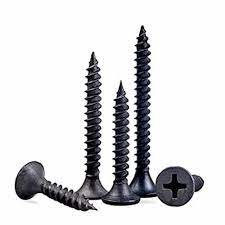Proper Placement of Lock Washers and Flat Washers in Assembly Operations
Understanding the Importance of Proper Washer Placement in Manufacturing
In the world of manufacturing, the placement and selection of washers—particularly lock washers and flat washers—are critical to ensuring the reliability and safety of assembled components. These seemingly simple yet highly effective fasteners play a vital role in securing bolted connections, minimizing wear, and preventing loosening over time. This article explores the significance of lock and flat washers, their applications, and the best practices for placement in various industrial settings.
The Role of Washers in Fastening Systems
Washers serve as crucial intermediaries between fasteners and the materials they secure. Lock washers, with their unique design, are engineered to prevent fasteners from loosening due to vibrations and dynamic loads. Flat washers, on the other hand, provide a larger surface area that helps distribute the load and prevent damage to the material being fastened. Both types of washers are integral to achieving tight, durable connections in products ranging from automotive components to industrial machinery.
Lock Washers vs. Flat Washers When to Use Each
Choosing the right type of washer depends on the specific requirements of the application. Lock washers should be used in situations where vibration is a concern, such as in automotive engines or machinery that undergoes frequent movement. They come in various designs—including split, tooth, and spring lock washers—each tailored for different scenarios.
Flat washers, while less specialized than lock washers, have their own set of benefits. They are ideal for use in applications where a smooth bearing surface is desired, as they help reduce friction between the nut and the surface. Flat washers are also essential for preventing material deformation that can occur when tightening fasteners directly onto softer substrates.
Best Practices for Washer Placement
lock washer flat washer placement company

To maximize the effectiveness of lock and flat washers, certain best practices should be followed during installation
1. Choose the Right Size The size of the washer should match the diameter of the bolt or screw used. A washer that is too small will not provide adequate support, while an oversized washer may not fit properly or could interfere with adjacent components.
2. Inspect Prior to Use Always inspect washers before installation. Look for signs of wear, deformation, or corrosion. Using damaged washers can compromise the integrity of the assembly.
3. Correct Order of Assembly When installing an assembly, the general rule is to place the lock washer under the nut or bolt head, while flat washers can be placed under the nut, bolt head, and sometimes under the component being fastened, depending on the application requirements.
4. Tighten Appropriately Ensure that fasteners are tightened according to manufacturer's specifications. Over-tightening can lead to stress fractures in the washer or even damage the components being joined.
5. Periodic Maintenance Checks In critical applications, consider scheduling regular maintenance checks to inspect the fastening systems. This includes checking the condition of washers and fasteners to ensure no loosening has occurred due to vibration or thermal cycles.
Conclusion
The careful selection and placement of lock and flat washers are fundamental to maintaining the stability and longevity of mechanical systems. Companies engaged in manufacturing must prioritize understanding the role of these components within their assemblies. By adhering to best practices and choosing the right washers for each application, manufacturers can enhance the performance and safety of their products, ultimately leading to better outcomes for both their operations and their customers.
-
Top Choices for Plasterboard FixingNewsDec.26,2024
-
The Versatility of Specialty WashersNewsDec.26,2024
-
Secure Your ProjectsNewsDec.26,2024
-
Essential Screws for Chipboard Flooring ProjectsNewsDec.26,2024
-
Choosing the Right Drywall ScrewsNewsDec.26,2024
-
Black Phosphate Screws for Superior PerformanceNewsDec.26,2024
-
The Versatile Choice of Nylon Flat Washers for Your NeedsNewsDec.18,2024










